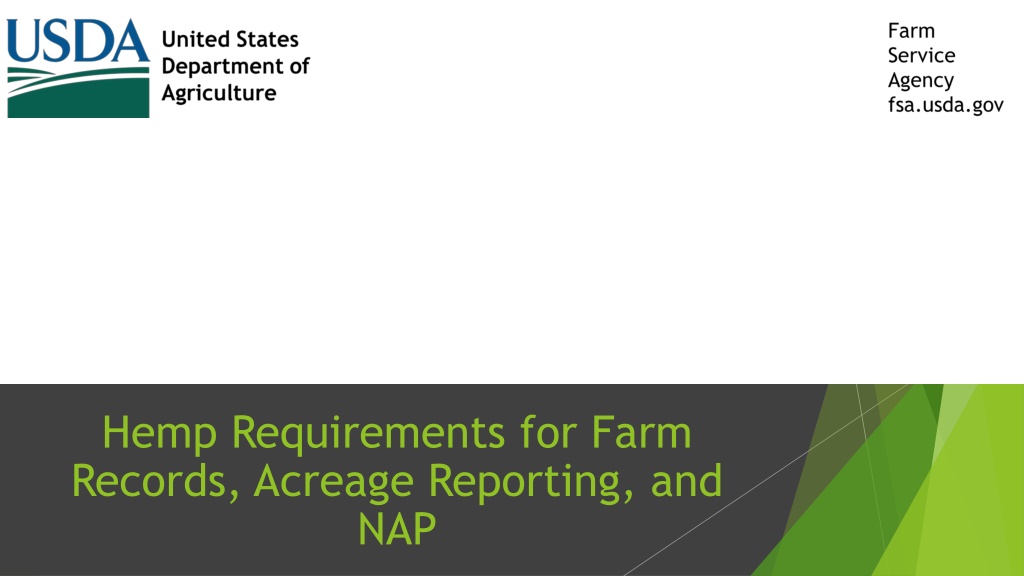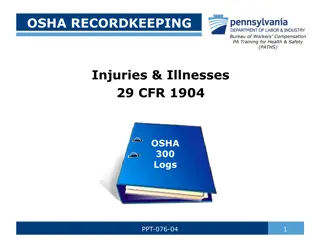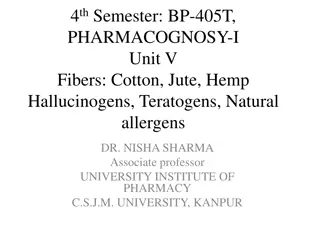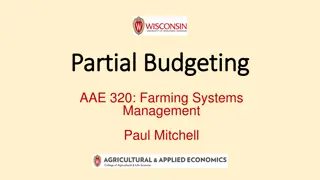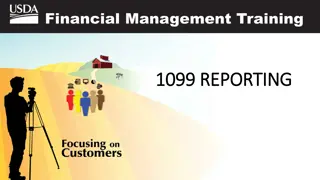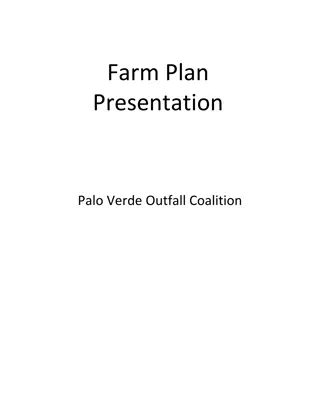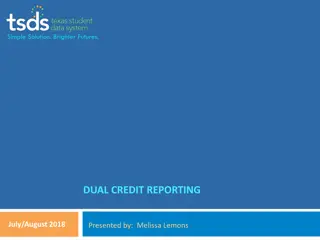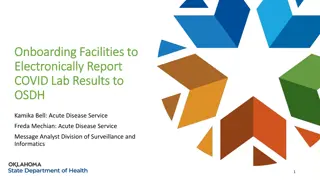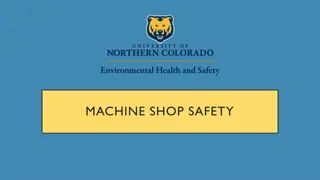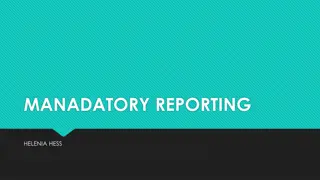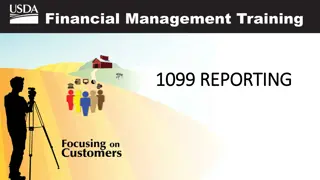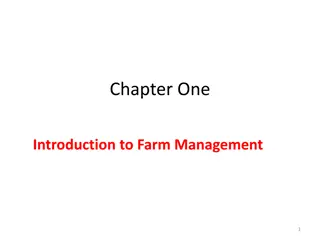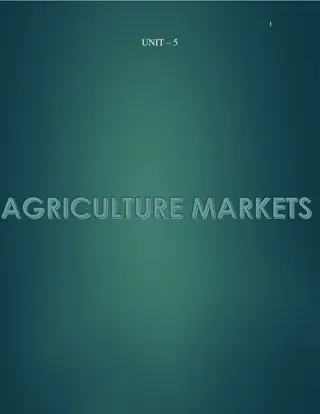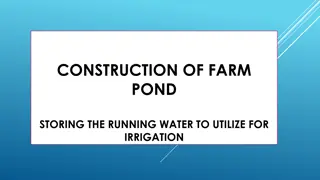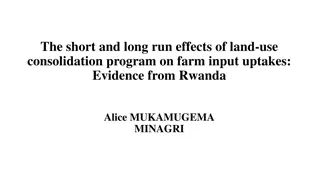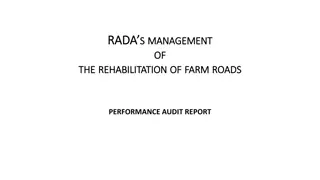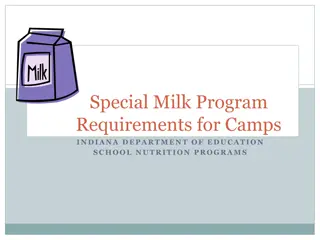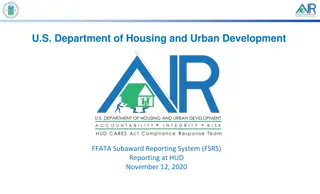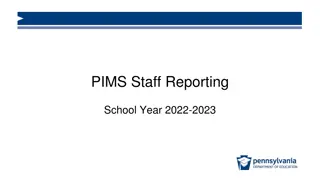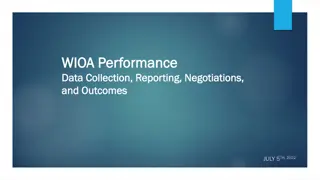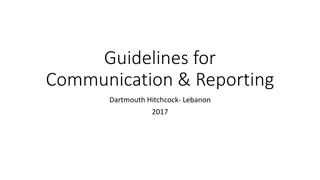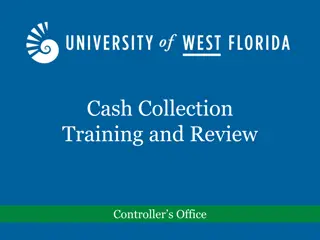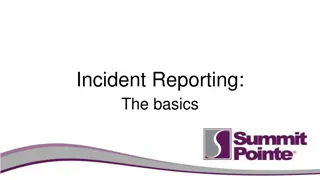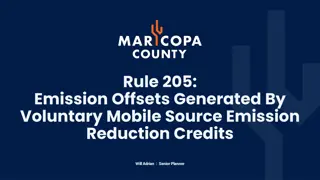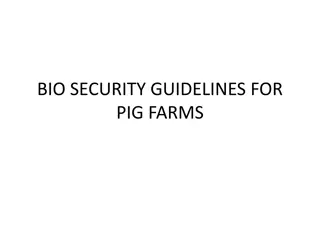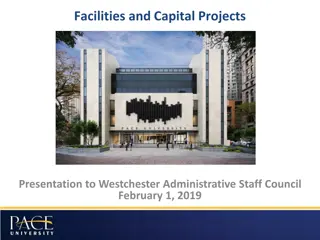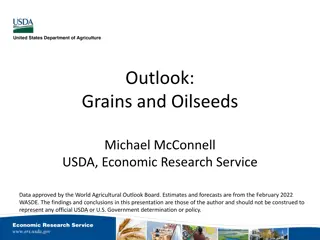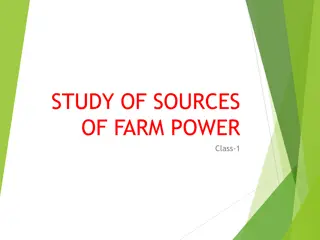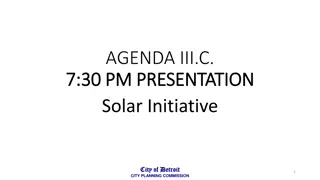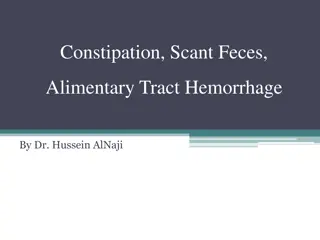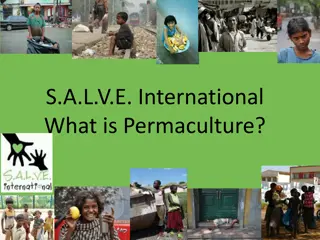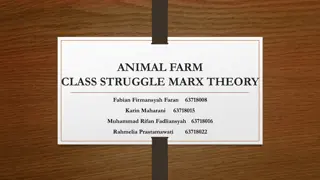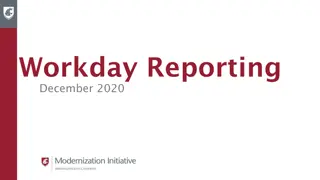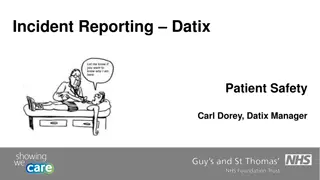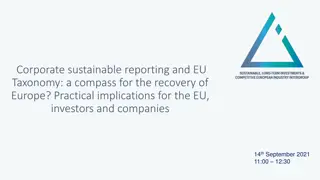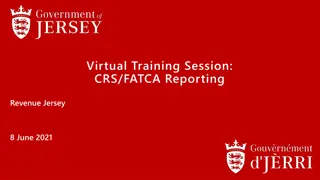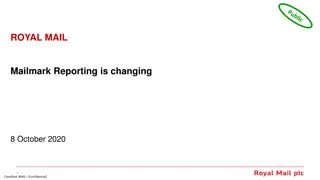Hemp Farm Recordkeeping and Acreage Reporting Guidelines
Learn about the essential requirements for farm recordkeeping, acreage reporting, and NAP certification for hemp cultivation. Understand the process of obtaining a farm number with FSA, filing acreage reports, and the importance of meeting reporting deadlines. Discover what information is needed for an acreage report and how to navigate requirements such as obtaining an AMS license number. Stay informed about key dates and procedures to ensure compliance with hemp farming regulations.
Download Presentation

Please find below an Image/Link to download the presentation.
The content on the website is provided AS IS for your information and personal use only. It may not be sold, licensed, or shared on other websites without obtaining consent from the author. Download presentation by click this link. If you encounter any issues during the download, it is possible that the publisher has removed the file from their server.
E N D
Presentation Transcript
Hemp Requirements for Farm Records, Acreage Reporting, and NAP
Do I have to get a farm number with FSA? Yes, to certify your Hemp a farm number is required. Your local FSA County Office can determine if a farm has already been established. We have different requirements for owners, operators, and other producers.
What is FSAs Hemp Acreage Reporting Date (ARD) for 2022? July 31, 2022, is the 2022 ARD for Hemp You may contact your local FSA Office to certify Hemp County Office information can be found at this link https://offices.sc.egov.usda.gov/locator/app?stat e=sc&agency=fsa
What is needed to file an acreage report? Planting pattern, when applicable Producer shares Irrigation practice(s) Acreage prevented from planting, when applicable Other information as required Processor Contract (If participating in NAP) Crop and crop type or variety Intended use of the crop Number of acres of the crop Map with approximate boundaries for the crop Planting dates
What happens if the acreage reporting deadline has passed? Can I still file? Yes. Acreage reports can be filed up to a year after the deadline has passed, with a fee. Acreage reporting establishes your eligibility for many programs including disaster programs.
Will the FSA County Office require my AMS License Number? Yes, FSA uses our Crop Acreage Reporting System (CARS) to certify the Hemp acres. A producers AMS license number will need to be entered in CARS for all intended uses of Hemp. CARS software can certify Hemp acreage as small as .0001 acre.
Code Intended/Actual Use CBD FSA-578 Printout CBD Definition CB Hemp intended use CBD (CB) is grown for extraction of plant resin (which includes cannabidiol (CBD) and other phytocannabinoids) which is used in oils, lotions, pharmaceutical or topical products cleansers, bath, or other FB Fiber Fiber Hemp intended use code Fiber (FB) is used for cloth, pressed plastics, ropes, animal bedding, paper, biofuel, packaging, concrete additives and spill cleanup GR Grain Grain Hemp intended use code Grain (GR) is used for hemp hearts, crushed seed oil (Not CBD), protein supplements consumption) Hemp intended to harvest for the plant s seed for growing a new crop, and not for livestock or human consumption. Hemp intended to harvest the plant, midway through its growing cycle, to sell for replanting or propagation purposes. (human or animal SD Seed Seed SE Sets Sets Hemp Intended Uses
Are permitted Hemp farmers reporting acres planted, harvested or both? Permitted hemp growers are required to report acres planted. If you have NAP coverage, harvested acres will be determined by loss adjusters during the notice of loss process. If producers had a permit, but no hemp was planted they do not need to report 0 acres to FSA.
Noninsured Crop Disaster Assistance Program (NAP)
What is NAP? NAP provides financial assistance to producers of non-insurable crops to protect against losses due to eligible natural disasters such as: Drought Tornado Hail Hurricane Freeze Excessive Wind Excess Moisture Lightning
NAP Levels of Coverage and Costs Basic and Buy-Up levels of coverage are offered. A service fee is applicable for all coverage levels, the NAP service fee is the lesser of $325 per crop or $825 per producer per administrative county, not to exceed a total of $1,950 for a producer with farming interest in multiple counties. Premiums are due on Buy-Up coverage levels Service fees may be waived
How is Hemp Covered Under NAP? Hemp grown in seasonal High Tunnel Houses, Hoop Houses, or greenhouses are eligible for NAP coverage if grown to maturity for one of the four intended uses. (Sets are not covered at this time) There is no policy specific to crops grown in a greenhouse. Hemp could be in raised beds, directly in the ground or grown hydroponically as long as it meets all other crop eligibility requirements for NAP it is eligible.
How do I find out more information about NAP or other FSA programs? More information about NAP and other FSA programs can be found on our Fact Sheet page or by contacting your local county office. https://www.fsa.usda.gov/news-room/fact- sheets/index https://offices.sc.egov.usda.gov/locator/app?stat e=sc&agency=fsa
South Carolina Farm Service Agency QUESTIONS??
